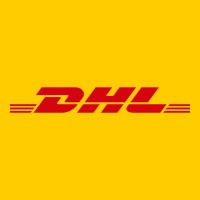
DHL Company Cyber Security Posture
dhl.comDHL is the leading global brand in the logistics industry. Our divisions offer an unrivaled portfolio of logistics services ranging from national and international parcel delivery, e-commerce shipping and fulfillment solutions, international express, road, air and ocean transport to industrial supply chain management. With specialized solutions for growth markets and industries including technology, life sciences and healthcare, engineering, manufacturing & energy, auto-mobility and retail, DHL is decisively positioned as "The logistics company for the world". DHL is part of DHL Group. Privacy notice https://group.dhl.com/en/data-protection.html
DHL Company Details
dhl
205978 employees
2422671.0
none
Transportation, Logistics, Supply Chain and Storage
dhl.com
Scan still pending
DHL_4422845
In-progress
Between 200 and 800
This score is AI-generated and less favored by cyber insurers, who prefer the TPRM score.
 DHL Global Score
DHL Global Score.png)

DHL Company Scoring based on AI Models
| Model Name | Date | Description | Current Score Difference | Score |
|---|---|---|---|---|
| AVERAGE-Industry | 03-12-2025 | This score represents the average cybersecurity rating of companies already scanned within the same industry. It provides a benchmark to compare an individual company's security posture against its industry peers. | N/A | Between 200 and 800 |
DHL Company Cyber Security News & History
| Entity | Type | Severity | Impact | Seen | Url ID | Details | View |
|---|
DHL Company Subsidiaries

DHL is the leading global brand in the logistics industry. Our divisions offer an unrivaled portfolio of logistics services ranging from national and international parcel delivery, e-commerce shipping and fulfillment solutions, international express, road, air and ocean transport to industrial supply chain management. With specialized solutions for growth markets and industries including technology, life sciences and healthcare, engineering, manufacturing & energy, auto-mobility and retail, DHL is decisively positioned as "The logistics company for the world". DHL is part of DHL Group. Privacy notice https://group.dhl.com/en/data-protection.html
Access Data Using Our API

Get company history
.png)
DHL Cyber Security News
Ransomware Attack on DHL Thailand Sparks Surge in Cybersecurity Demand
The ransomware attack on DHL Thailand in June 2025, attributed to the DEVMAN group, has sent shockwaves through the logistics and critical ...
How DHL eSecure provides secure online shipping for businesses in Thailand
The shipping industry in Thailand is swiftly moving from manual methods to digital solutions. Although this shift to digital logistics ...
Blue Yonder moves closer to full recovery after November ransomware attack
The Arizona-based supply chain technology company was the target of a Nov. 21 ransomware attack, which impacted its managed services hosted ...
Cyber-Attack on Microlise Disrupts DHL and Serco Tracking Services
The attack compromised “some limited employee data,” according to Microlise's statement to the London Stock Exchange, although the company has ...
Serco, DHL among firms affected by Microlise cyber attack
Telematics firm Microlise has confirmed that attackers accessed employee data in a hack that saw tracking services for customers disrupted.
DHL Replaces Microsoft as Most Imitated Brand in Phishing Attempts in Q4 2021
The attacker was trying to lure the victim to click on a malicious link (http://reg[.]chaindaohang[.]com/wp-content/uploads/2021/07/dhl/index[.]php?i=i&0= ...
Cyberattackers stole Microlise staff data following DHL, Serco disruption
Telematics tech biz Microlise says an attack that hit its network likely did not expose customer data, although staff aren't so lucky.
News UK supermarket supply chains hit by cyber attack on Blue Yonder
A cyber-attack against Blue Yonder has added further worries to logistics companies around ongoing geopolitical instability.
Hackers Using Sitting Ducks Attack To Hijack Domains, 1 Million Domains Vulnerable
Over 1 million registered domains could be vulnerable to a cyberattack method known as “Sitting Ducks,” as recently unveiled in a new report ...

DHL Similar Companies

Delhivery
#WeGoTheExtraMile | We are India’s largest fully integrated logistics provider, simplifying commerce with cutting-edge technology, world-class infrastructure, and unmatched expertise to deliver seamless supply chain solutions for businesses of all sizes. Comprehensive Solutions for Every Need ➡️E

ADNOC Logistics & Services
ADNOC L&S is the region’s largest shipping and integrated logistics company and a global energy maritime logistics leader with a world-class asset base. It is the maritime logistics arm of ADNOC Group, a key enabler to ADNOC’s strategy and a catalyst for Abu Dhabi’s growth and diversification, deliv

PT Pos Indonesia (Persero)
Pos Indonesia is an Indonesian state-owned company (BUMN) engaged in postal services. Pos Indonesia was appointed by the government to be the national logistics platform for its wide and comprehensive network that spreads throughout Indonesia. Pos Indonesia was established in Jakarta on August 26,

Kerry Logistics
Kerry Logistics is an Asia-based, global 3PL with a highly diversified business portfolio and the strongest coverage in Asia. We offer a broad range of supply chain solutions from integrated logistics, international freight forwarding (air, ocean, road, rail and multimodal), e-commerce and express t

Grupo Almo
Somos un grupo líder en la industria de seguridad, servicios de transporte de valores, paquetería y courier. Operamos en Guatemala, El Salvador, Honduras, Nicaragua, Costa Rica y Panamá. Hemos sido el líder en la mayoría de los segmentos del negocio por más de 40 años. Actualmente empleamos m

Ecom Express Limited
Ecom Express: Delivering Over 1.9 Billion Reasons to Trust Us Based in Gurugram, Ecom Express was established in 2012 by veterans backed by 100+ years of collective logistics expertise. We aren't just a logistics provider—we're your partner in bridging distances and making connections. Our network

Frequently Asked Questions
Explore insights on cybersecurity incidents, risk posture, and Rankiteo's assessments.
DHL CyberSecurity History Information
How many cyber incidents has DHL faced?
Total Incidents: According to Rankiteo, DHL has faced 0 incidents in the past.
What types of cybersecurity incidents have occurred at DHL?
Incident Types: The types of cybersecurity incidents that have occurred include .
Incident Details
What are the most common types of attacks the company has faced?
Additional Questions
What Do We Measure?
















Every week, Rankiteo analyzes billions of signals to give organizations a sharper, faster view of emerging risks. With deeper, more actionable intelligence at their fingertips, security teams can outpace threat actors, respond instantly to Zero-Day attacks, and dramatically shrink their risk exposure window.
These are some of the factors we use to calculate the overall score:
Identify exposed access points, detect misconfigured SSL certificates, and uncover vulnerabilities across the network infrastructure.
Gain visibility into the software components used within an organization to detect vulnerabilities, manage risk, and ensure supply chain security.
Monitor and manage all IT assets and their configurations to ensure accurate, real-time visibility across the company's technology environment.
Leverage real-time insights on active threats, malware campaigns, and emerging vulnerabilities to proactively defend against evolving cyberattacks.




